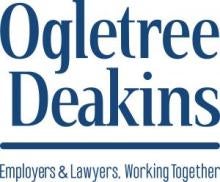Over the past few years, several colleges and universities across the country have unexpectedly closed, often with little notice to the communities they served. When this happens, the immediate attention is usually given to students and how they will be able to continue their educational journey without significant losses of time, credits, and tuition dollars spent. Yet there are also important considerations that must be given to employees when a post-secondary institution suddenly ceases operations.
Quick Hits
- When colleges and universities unexpectedly close, immediate attention is often given to students, but significant employment law considerations include compliance with the WARN Act, collective bargaining agreements, and individual contracts.
- School closures necessitate careful handling of employee benefit plans, such as health insurance, retirement plans, and life and disability insurance, to ensure employees can make informed decisions and maintain coverage.
- Administrators may want to confirm proper government filings and post-closing actions are completed, potentially contracting with current or third-party service providers to manage these responsibilities after the school has closed.
From an employment law perspective, school administrators and boards of education may want to consider the following potential compliance issues:
WARN Act Notices: The federal Worker Adjustment and Retraining Notification (WARN) Act generally requires that employers with one hundred or more employees provide at least sixty days advance notice of a mass layoff (usually meaning a layoff impacting fifty or more people). Some states have their own mass layoff notice requirements, which also must be followed. Notably, several state mass layoff laws can have lower thresholds at which the notice is triggered.
Collective Bargaining Agreements: Post-secondary institutions with unionized employees may have collective bargaining agreements that include provisions implicated by a layoff. For example, collective bargaining agreements often contain clauses regarding seniority rights, which could dictate the timing and manner of employee layoffs. There may also be health and pension provisions that have withdrawal obligations.
Individual Contracts: Faculty members and administrators often have individual employment contracts in higher education. Schools may want to review these contracts to determine the consequences for breach if the contract is ended early due to a school closure. Relatedly, these contracts may have notice provisions prior to termination of employment, and timely notice may minimize or eliminate any damages for breach.
Contracted and Seasonal Employees: In addition to regular, permanent employees, post-secondary institutions often utilize contracted workers and seasonal employees. Again, the school’s relationship with contracted workers is likely governed by a contract with a third-party staffing agency or vendor. Schools may want to evaluate these contracts for any notice requirements to end the contract and/or any penalties for breach. Similarly, schools may want to evaluate whether they have any obligations to seasonal employees, and give those seasonal workers advance notice, if possible, that their positions are being eliminated.
Payout of Accrued Leave: An increasing number of states have paid leave laws in effect. Many other state wage payment laws are triggered by specific employee handbook language regarding the payout of any accrued or earned leave. Colleges and universities may want to note all employee leave types and accruals and ensure that any such leave is appropriately paid out upon termination of employment.
Employee Records: Employee records, such as personnel files and payroll documents, are often governed by a record retention policy. Schools that intend to close may want to engage a third-party vendor to retain all employee records for the required time duration. Schools may also want to confirm that employees are given the third-party vendor’s contact information in case they need to access any documents after the school is closed, such as Forms W-2 and 1099-R information for tax filing purposes.
Employee Benefits
In addition to the employment compliance issues that arise during a school closure, there are significant implications for the school’s employee benefit plans. Administrators and boards of education should also be cognizant of their responsibilities under federal and state benefits laws, and also ensure that employees are able to make informed benefits-related decisions to protect and preserve their financial well-being and continuity of medical care for themselves and their families.
Employee benefit plans typically include health insurance, retirement plans, life insurance, disability insurance, and other welfare benefits. The common issues that arise with employee benefits plans during a school closure include the following:
Health Insurance: Typically, when a school shuts down and terminates its employees’ employment, the employees lose eligibility for the medical plan immediately or by the end of the month in which they are discharged. While the Consolidated Omnibus Budget Reconciliation Act (COBRA) of 1985 generally allows laid-off employees the right to continue their health insurance coverage for a period of eighteen months, there is an unfortunate twist here because the school’s medical plan coverage is likely ending. This will cut short the eighteen months of COBRA coverage that employees typically expect to receive. Consequently, employees would need to consider other healthcare options, such as a state healthcare exchange or their spouse’s health plan. Schools considering closure may want to carefully coordinate with their COBRA administrator to communicate COBRA rights and other alternatives to impacted employees.
Retirement Plans: Closing schools must also take action to terminate their 401(k), 403(b), and 457(b) plans, as applicable. This entails providing communications to employees that explain their distribution options and allow them to make elections. Schools will also need to notify their service providers, execute a resolution to terminate the plans, and amend the plans to bring them up to date with recent legislation and regulatory guidance from the Internal Revenue Service (IRS) and the U.S. Department of Labor (DOL). A school that sponsors a 401(k) plan may want to consider whether to submit a determination letter to the IRS to ensure the plan is qualified in form.
Life and Disability Insurance: Schools may also want to review their life and disability insurance policies to determine when coverage ends, and if employees may convert the policies to individual policies to ensure continued coverage without a lapse. Without a school’s contribution toward premiums, the cost to former employees will likely be higher, but there will be continuity of coverage for those who value the benefit.
Severance Benefits: Schools that have a severance plan may want to carefully review the plan’s governing document to follow the terms and conditions for eligibility, benefit calculation, and the form of benefit (lump-sum or in installments). Also, there will be additional requirements for officially winding down plans that are subject to the Employee Retirement Income Security Act (ERISA). Schools without formal severance plans may want to assess their finances to see whether they have the wherewithal to provide severance benefits to dismissed employees.
Government filings and post-closing actions: Finally, schools may want to make arrangements to ensure that all required government forms are correctly filed, such as a Form 5500 for 401(k) or 403(b) plans up to and including the year that a plan’s trust has been completely liquidated. Schools could contract with current Human Resources or other current employees to perform the required filings post-closure, or they could engage a third-party service provider to complete the required filings. Either way, schools will likely need to execute a written agreement to effectuate the ability to carry out these filing responsibilities and any other similar actions needed after the school has closed.





 />i
/>i

